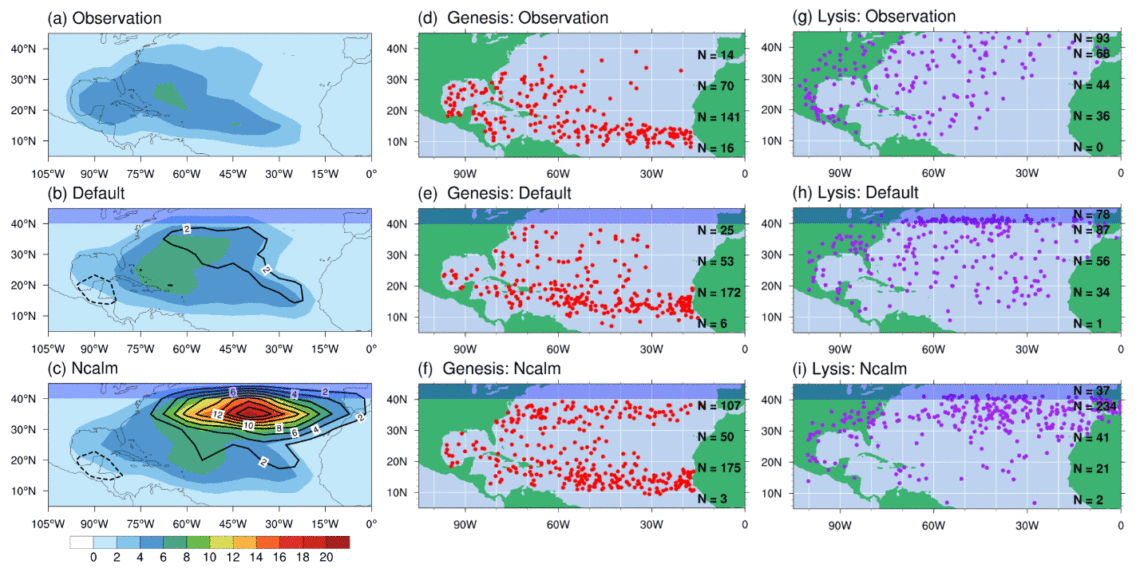January 7th, 2020
Key Findings
- This study simulated the influence of extratropical weather variability on tropical cyclone formation using an idealized experimental design, perturbing the northern boundary conditions of a regional TC-permitting atmospheric model.
- Artificial suppression of extratropical weather perturbations along 45°N elevates hurricane activity at 30°N–40°N in idealized experiments
- The response is related to reduced equatorward mixing of extratropical dry air, which could occur to some degree in altered climate states
- The experimental results suggest mechanisms through which extratropical atmospheric variability could affect tropical cyclogenesis
Gan Zhang, Thomas R. Knutson, and Stephen Garner. Geophysical Research Letters. DOI: 10.1029/2019GL085398
Recent observational studies suggested that Atlantic hurricane activity is strongly affected by weather processes outside of the tropics, but modeling studies reported divergent findings regarding the importance of such an impact. Using a regional atmospheric model with imposed boundary conditions, the authors conducted idealized experiments to explore whether and how extratropical weather perturbations affect Atlantic hurricane activity.
In this study, 22-year simulations of August–October suggest that extratropical suppression of weather perturbations adds ~3.7 Atlantic hurricanes, or tropical cyclones (TC) per season on average, although the response varies among individual years. The TC response mainly appears within 30°N–40°N, where tropical cyclogenesis frequency quadruples compared to control simulations. This increased cyclogenesis, accompanied by a strong increase of mid‐tropospheric relative humidity, arises as the perturbation suppression reduces the extratropical interference of TC development. The suppression of extratropical perturbations is highly idealized but may suggest mechanisms by which extratropical atmospheric variability potentially influences TC activity in past or future altered climate states.
This study helps to clarify the sensitivity of Atlantic hurricane activity to extratropical weather perturbations. The extratropical impact is an important contributor to uncertainties in hurricane predictions but had not been well understood. These findings suggest that the extratropical impact on the variability and future changes of Atlantic hurricane activity can be profound. Together with our other ongoing studies, this study may lead to more reliable predictions of Atlantic hurricane activity on seasonal to centennial time scales.



